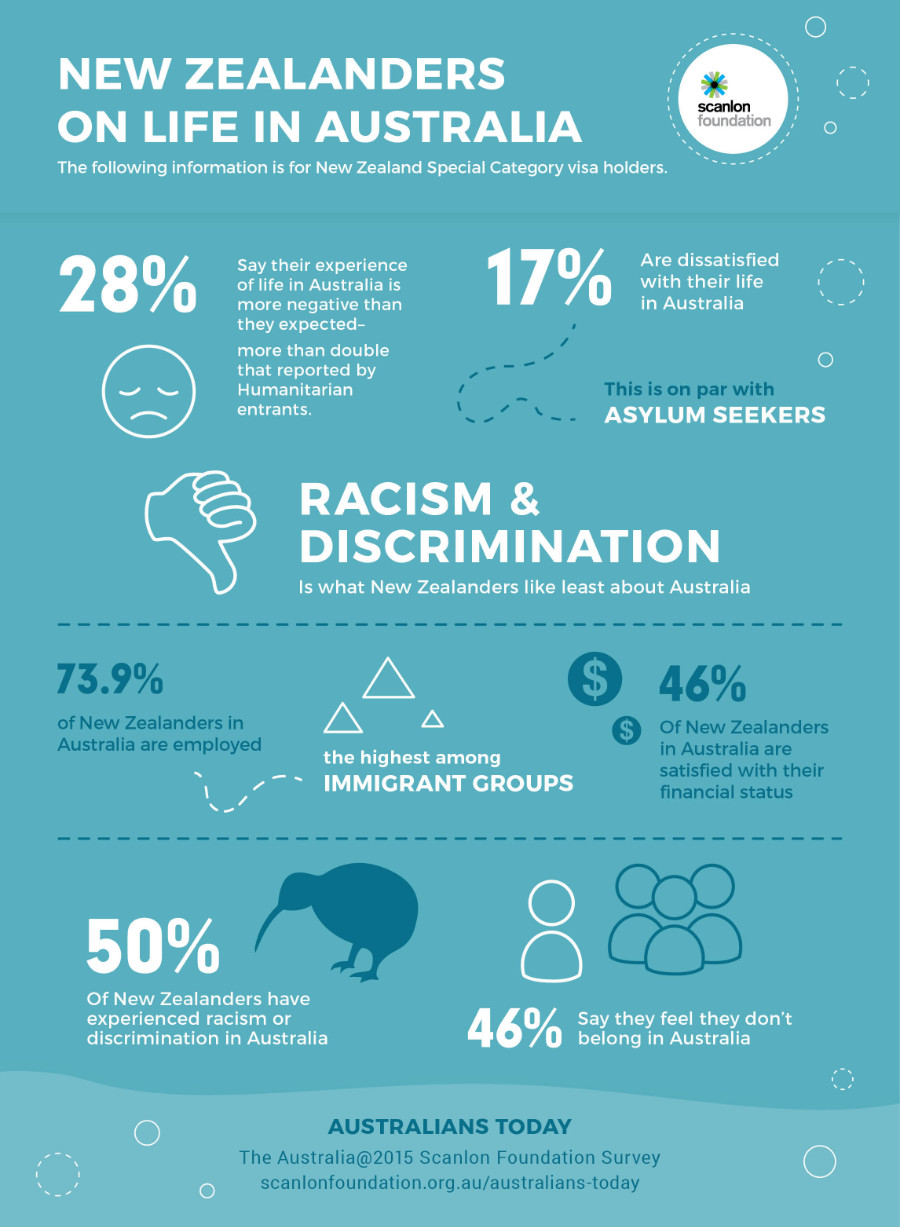AUSTRALIANS
TODAY
Landmark research into multiculturalism 2016
Australia has experienced sustained population growth for many decades. In 1996 the population was 18.3 million, at the end of 2015 it was close to 24 million.
Immigration is never an easy program for governments to manage across a number of dimensions, including economic, social and environmental. Difficulties include the need to balance a range of competing interests.
Australia’s 2016 immigration program provides for 190,000 permanent places, 68 per cent in the Skill stream and 32 per cent in the Family stream. In addition, there are 13,750 places in the Humanitarian program, with a special provision over several years for 12,000 refugees from the Syrian conflict. It is a complex program to administer.
Are immigrants happy or unhappy? What do they like best and least about Australia? What’s it like to be Muslim here? Or a New Zealander?


New Zealand Special Category visa holders face a unique set of challenges when they live in Australia. In addition to not having access to a number of social services and citizen supports, they also report experiences of discrimination.

The Australia@2015 study shed light on what it’s like to be a Muslim in Australia today. Muslims are often misconceived as a unified group. The reality is that Australian Muslims are as diverse as the Australian population, divided by culture and ethnicity, religiosity, and by generational difference.
Not only do Muslim people attract negative sentiments from generational Australians, but other immigrant groups too. One of our focus groups with Chinese-born participants found members of that community were afraid to live in areas with Middle Eastern inhabitants, fearing radicalisation and extremism. Despite this, the overwhelming majority of Muslim respondents expressed their appreciation for Australia and freedoms including democracy and work rights for all.